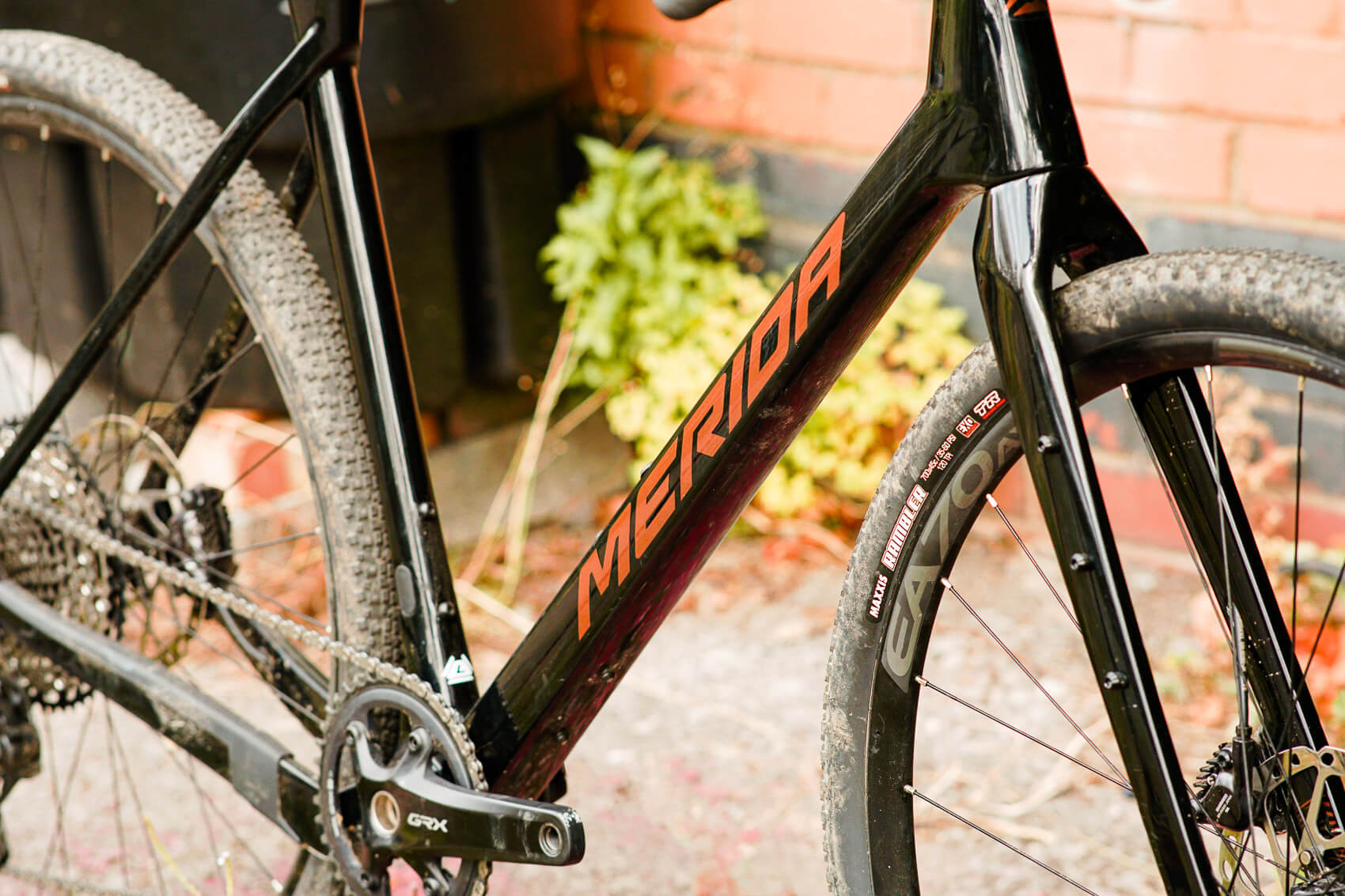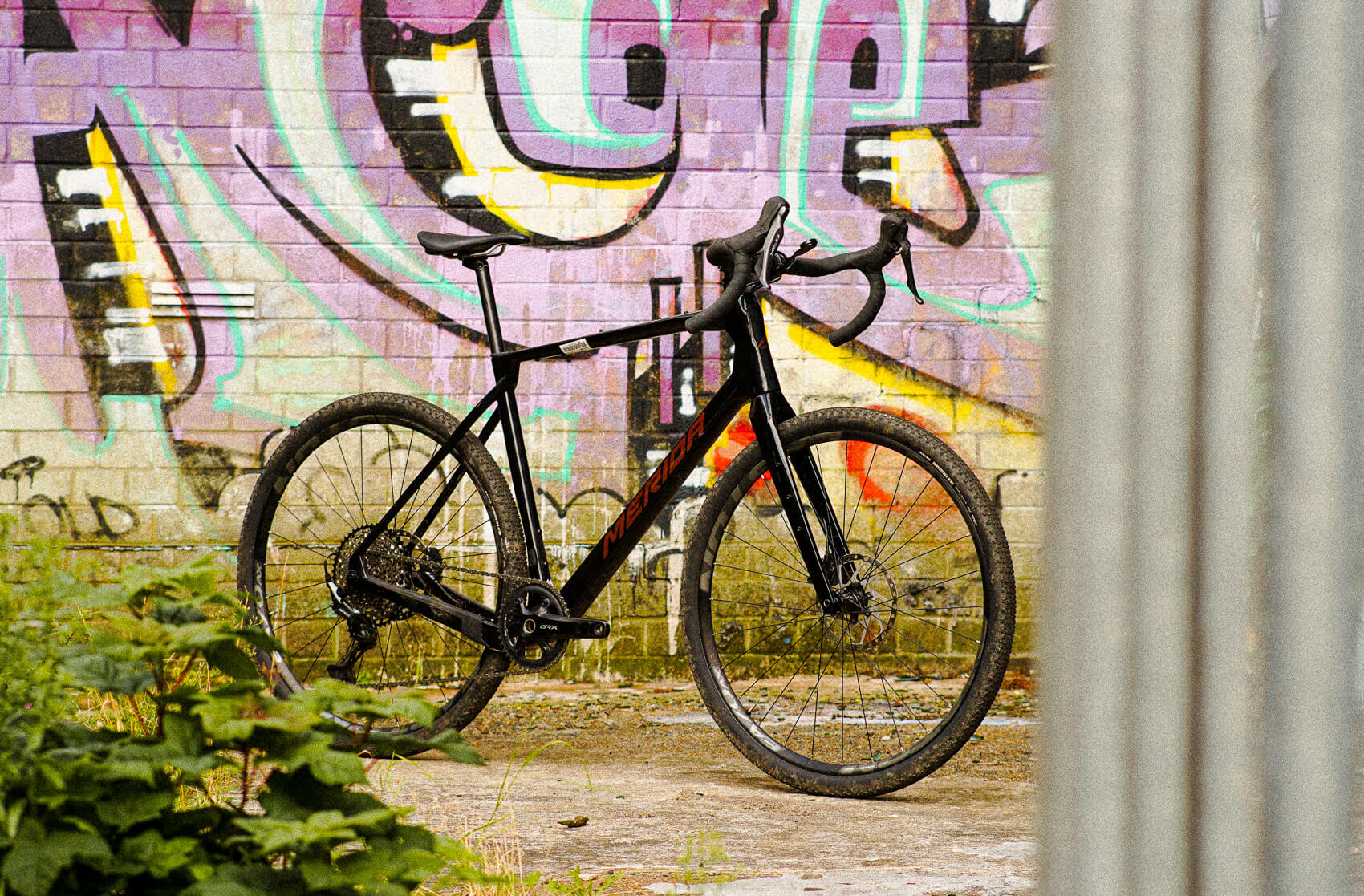The Merida Silex 7000 isn’t our usual fare, but, if you’re interested in bikes that cover ground fast off road and you don’t mind curly bars, this should be in your sights.
Let’s take a deep dive into the Merida Silex 7000 and see what makes this thing worth your attention.

Carbon frame and fork, carbon wheels, GRX groupo, heaps of mounts to flip it between racer and bike-packer. MTB inspired geometry.
Gravel bikes used to be CX bikes with a different sticker, meaning crap angles and flimsy tyres.
This ain’t one of those.

Fast
What is a gravel bike? Who knows. Who cares.
John Prolly spent a lot of time talking sense about this in his recent Next-Gen Gravel review on the Radavist. Go read that, he argues the case far more eloquently than I can.
To some, it leans towards tarmac whilst being off-road capable. To others, it’s a mountain bike with faster tyres. Personally, I think that it should be a bike that’s capable of covering some ground and it can do the job of both a road bike and a mountain bike. Versatility is key.
In the case of the Silex, It’s clear this thing’s intentions are speed. Just look at it. Slammed front end. 700c wheels with 45C tyres. Lightweight, carbon frame. No dropper post in sight. This thing is made for getting your head down and hauling ass. It’s a world away from my personal drop bar with its 650b wheels, heftier alloy frame, 50mm tyres, dropper and massive bars.
If you need to hammer out the road miles, this black beauty will fly.
When you run out of tarmac and hit the fire road, you aren’t going to be slowing down. Sure, when the gravel gets chunky you’re going to need some skills, but that’s part of the fun for me.
If you have any doubts of the intentions of this bike, just look at Matej Mohoric’s 2023 victory at the Gravel World Championships. Some gravel bikes are made for merrily plodding through the countryside, others are made for winning gold medals. Mohoric showed what this is made for.

Tyres Matter
I said in my Rimpact review that gravel bikes are made or broken by their tyres, and more specifically their tyre pressure.
Crap rubber means high pressures to avoid punctures – which makes for skittery, slippery, juddery riding.
Get those pressures down low and you’ve suddenly got a bike that’s surprisingly capable and grippy and won’t shake your dentures loose.
It’s great to see the Silex 7000 come with decent rubber, by way of Maxxis Ramblers. I’ve spent a load of time on these tyres on my personal drop-bar and been really impressed at how fast they roll, whilst still clinging on in rough, rocky, slippy conditions.
Get some inserts in them and you’ll build a real off-road speed machine.

The Fine Details
Merida always impress me with those little touches, they really go above and beyond to add a little extra to their frames.
Love it or hate it, the Silex makes full use of internal cable routing and it looks razor sharp. Cables emerge for a split second from the grip tape, then sneak off into the headset, never to be seen again. They don’t get upset the clean lines of the frame, and they don’t cause any annoying interference when you mount a bar bag. I’d love that on my own bike.
There’s also an X-Taper head tube, offering a larger headset diameter for a stronger head tube without heaps of added weight and the use of tapered steerers. There’s the Disc Cooler, a tiny piece of forged and finned aluminium that reduces heat and keeps your braking under control. There’s an internal seat clamp, designed to look smart and add aero gains.
There’s a removable brace on the seat stays that makes fitting your mudguards easy – but – that can be removed for the summer to keep your bike looking clean and sporty. That’s all before you even get stuck into Merida’s Nano Matrix Carbon and AWS Anti Wrinkle carbon design.

No One Tricky Ponies
Sure, the Silex is clearly made for going fast. The website talks of the aero gains of a seat clamp, cables are hidden away out of the wind, fast frame and light wheels.
But it’s clearly not just a racer.
There’s mounts on the fork, on top and below the top tube, inside the triangle and down below the down tube.
This thing has stacks of room for bike packing gear and would be a hell of a rig for long distance adventures.
I like that the Silex is made for speed, but Merida aren’t leaving out the adventure crowd. After all, that’s half the fun of gravel bikes, right?
It’s nice to see a bit that’s made for speed, and proves it with a World Champs win, but can also do some plodding.

Speedy Shouldn’t Mean Sketchy
It used to be that a fast gravel bike had to be an uncomfortable one.
They’d borrow DNA from CX or road and create steep, harsh, low and long frames with narrow tyres and horribly narrow clearance. Whilst you’d never call the Merida a drop bar mountain bike, the geometry is bias towards riding in the dirt. Short back end, long and stable front, 440mm wide bars on sizes large and XL. The head angle is slacker than previous generations of Silex, at 69.5°.
40mm tyres (1.75”ish) aren’t new-school wide, but, they’re a good compromise between fast and comfy. There’s clearance for up to 45mm, or 42mm with mudguards.
It won’t feel sluggish and slow, it’ll fly along the fire roads, it’ll give you just enough to have an absolute blast when the terrain gets rowdier.

The Details


The Merida Silex 7000 is £3,000 in the UK and available from any of Merida’s dealers.
If you fancy something even posher, there’s the Silex 8000. Or, for slightly more modest budgets there’s the 700, which comes with an aluminium frame.
You can learn more about the Merida Silex 7000 here on Merida’s website.




